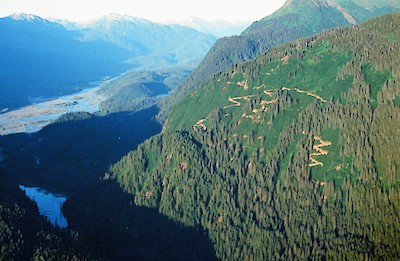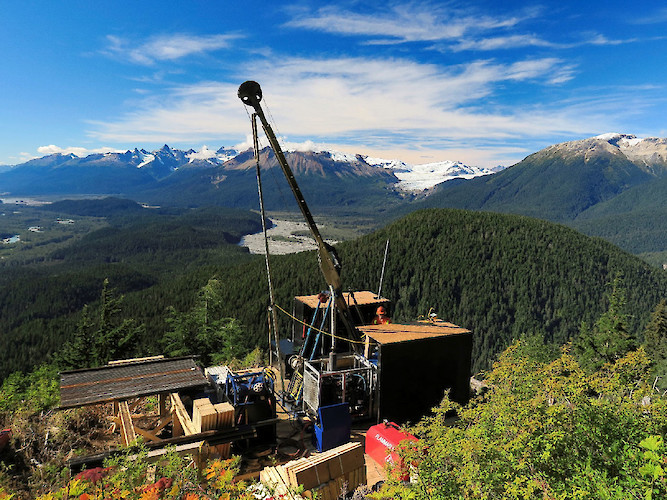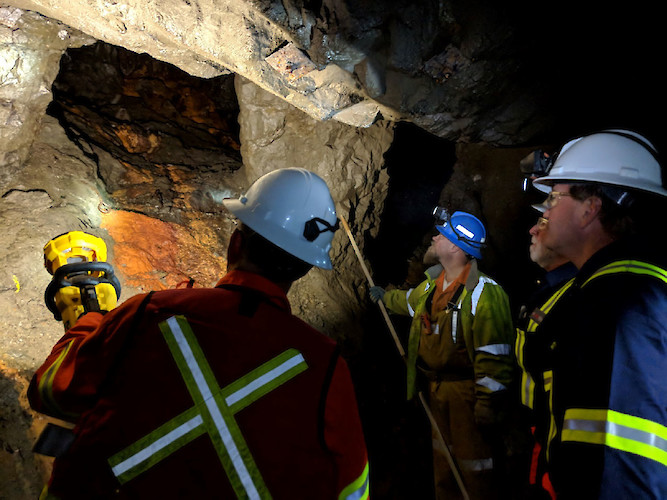Skeena acquired 100% interest in the past-producing Snip mine from Barrick Gold in July 2017. The property consists of one mining lease and eight mineral claims totaling approximately 4,546 hectares in the Liard Mining Division. The Snip mine produced approximately one million ounces of gold from 1991 until 1999 at an average gold grade of 27.5 g/t.
Recent Work Completed by Skeena
In September of 2023, Skeena released an updated Mineral Resource Estimate for the Snip Gold Project. The Indicated Resource now includes 823,000 ounces hosted within 2.74 million tonnes at an average grade of 9.35 g/t Au. This represents an increase of 579,000 ounces, or 237%, from the original 2020 Mineral Resource Estimate. Resources within the Inferred category include 114,000 ounces hosted within 499,000 tonnes at an average grade of 7.10 g/t Au (Table 1).
Table 1: Indicated and Inferred Underground Resource Reported in Veins Contained Within Long Hole Stope Optimized Shapes Created at a 2.5 g/t Au Cut-off Grade
| Domain | Tonnes (000) |
Contained Grade Au (g/t) |
Contained Metal Au (000 oz) |
|
|---|---|---|---|---|
| Indicated Mineral Resources | ||||
| Main - V | 850 | 9.59 | 262 | |
| Main - S | 1,718 | 9.28 | 513 | |
| Twin West | 171 | 8.69 | 48 | |
| Total Indicated | 2,739 | 9.35 | 823 | |
| Inferred Mineral Resources | ||||
| Main - V | 115 | 7.38 | 27 | |
| Main - S | 323 | 6.22 | 65 | |
| Twin West | 61 | 11.02 | 22 | |
| Total Inferred | 499 | 7.10 | 114 |
"With the successful conversion of over 570,000 gold ounces to the Indicated category, we are very pleased with the updated Mineral Resource Estimate for Snip,” notes Randy Reichert, President & CEO. “This Resource will form the basis of a detailed engineering study with project economics, which we anticipate being released in H1 2024. The study will demonstrate the potential benefits of adding Snip mineralization to the Eskay Creek Project as a satellite operation, likely including an increased mine life and improved concentrate payabilities at Eskay Creek. We look forward to continuing to unlock value for all stakeholders as we advance the Project."
History of the Property
The Snip vein mineralization, discovered in 1964 by Cominco geologist Ted Muraro, lay dormant until drilled in 1986 as part of a Cominco joint venture with Netolitzky-led Delaware Resources. Those drill results triggered a massive claim staking rush and exploration boom throughout the Golden Triangle that led to the discovery and development of Barrick Gold’s Eskay Creek (past production of 3.27 million ounces of gold at a grade of 49 g/t and 158 million ounces of silver at 2,406 g/t). Other significant projects in the Golden Triangle include Pretium’s Brucejack and Valley of the Kings gold deposits, Imperial Metal’s Red Chris porphyry copper-gold mine, Teck and Novagold’s Galore Creek deposit, Teck’s Shaft Creek porphyry copper-gold deposit, Seabridge’s porphyry copper-gold Deep Kerr Project, and Ascot’s re-activated Premier Project.
The Snip deposit is an auriferous southwest-dipping shear vein system, hosted within Upper Triassic Stuhini Group feldspathic meta-sediments that are intruded by Early Jurassic age stocks and plutons. Other major deposits within the Golden Triangle are also related to compositionally similar Early Jurassic intrusions. The Snip deposit occurs within the southeast trending Bronson structural corridor which also controls the other significant deposits within the Iskut River area. Approximately 60% of the production was obtained from the Twin Zone, a 0.5 to 15 metre wide sheared quartz-carbonate-sulphide vein system that cuts through a massively bedded feldspathic greywacke-siltstone sequence. Other sub parallel structures located in the footwall to the Twin Zone accounted for the rest of the production. A barren, post mineralization dike divides the main vein into two parts for most of its length, hence the name Twin Zone. Gold mineralization occurs in one centimetre to one metre wide alternating bands of massive calcite, disseminated to massive pyrite, biotite-calcite as thin bands or streaks, or in quartz with sulphides in a crackle breccia or pyritic to non-pyritic fault gouge. Total sulphide content seldom exceeds two percent and the mineralized structures characteristically contain minor pyrrhotite, arsenopyrite, sphalerite, chalcopyrite and rare galena.
The Twin Zone occupies an east-southeast striking structure with dips ranging from 30 to 90 degrees to the southwest. The zone has been traced by drilling and mining over a strike length of approximately 1,000 metres and over a dip length of 500 metres. The deposit remains partially open along strike, and in some production areas, where the estimated cut-off grade of 24 g/t Au was below the economic limit for mining at the time.
Snip was historically burdened with the high cost of being a stand-alone operation serviced by air via the Bronson airstrip, and by hovercraft from Wrangell, Alaska by way of the Iskut River. This required high grades to ensure economic viability. Additionally, mechanized mining shrunk from approximately 82% of mine production during the first production year (1991), to approximately 16% by 1998, which resulted in a near-doubling of the unit mining cost over the mine life at the same time the gold price fell from a high of US$383 per ounce in 1994 to US$300 per ounce by 1999.
The Golden Triangle district has become one of the most important metal regions in Western Canada and is being further enhanced with recent significantly improved infrastructure, including paving of the Stewart-Cassiar highway north from Smithers, ocean port facilities for export of concentrate at Stewart, and completion of BC Hydro’s 287 kilovolt Northwest Transmission Line from Terrace to Bob Quinn Lake and north to the Red Chris mine. The hydroelectric facility at McLymont Creek, built 2 years ago, is located approximately 20 kilometres east of Snip. Road access to the McLymont Creek facility is currently within 20 kilometres of the Snip mine along predominantly flat terrain in the Iskut River valley bottom.
The prospects for redeveloping the Snip property have improved dramatically, given today’s substantially higher gold prices, subsequent improvements in infrastructure and access, the prospect of remaining high-grade mineralization and exploration upside.


